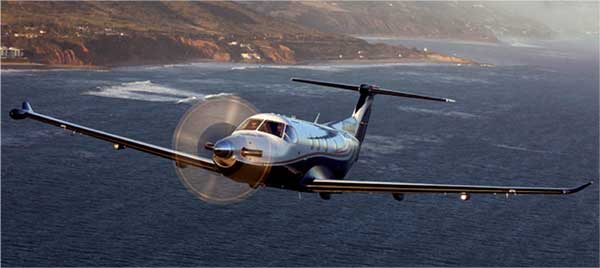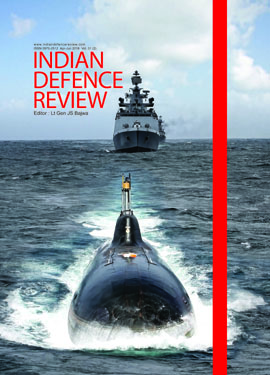This Aerospace Park is the first of its kind in India and comprises a cluster of manufacturers to indigenously deliver major aircraft components, spares and avionics requirements of the aerospace industry. Its Helicopter Division is vying for the production of Navy Utility Helicopters (NUH) and Recce & Surveillance Helicopter (RSH) through joint ventures for Ministry of Defence.
Of all private contenders, TASL is perhaps the one nearest to acquiring the capability to manufacture full aircraft, radars and Unmanned Aerial Vehicles (UAVs)…
Other long term plans include creation of a centre of excellence in aerospace structures, engine design and manufacture, fabrication and platform integration, development of UAVs and an aerostat segment to meet military requirements. The company also looks into the future to integrated long term support programmes in military and commercial aviation sectors, to undertake the Maintenance, Repairs and Overhaul (MRO) joint ventures with leading OEMs. It recently signed an agreement with Ukraine-based, state-run Antonov Company for cooperation on a 50 to 80-seater, transport aircraft for military, para-military and civil use. The plan is to manufacture the aircraft at MIHAN.
It is also setting up a joint venture company with Rafael Advanced Defence Systems Ltd. in India in the highly specialised areas of air-to-air missiles, air defence systems and large aerostats that will oversee projects worth $10 billion (Rs 66,000 crore) in the next ten years. The venture will have 51 per cent holding from Reliance Defence and 49 per cent by Rafael as per the current guidelines of the government. However, Reliance Group chairman Anil Ambani has publicly lamented that opportunities were being denied to new defence companies on grounds of lack of experience and that new companies currently remain limited to micro projects worth a few crore rupees at best. Reliance Group is a new entrant in the defence sector and most recently, the government approved 12 industrial licences for defence subsidiaries of group company Reliance Infrastructure Ltd. (R-Infra) for making helicopters, aircraft, missiles and UAVs, among others.
According to Anil Ambani, “Despite a committed reformist mindset at the top, we are still seeing opportunities being denied to new players on grounds of lack of experience. This is the classic chicken-and-egg situation where nobody wins……”
Reliance Group chairman Anil Ambani has publicly lamented that opportunities were being denied to new defence companies on grounds of lack of experience…
It is worth mentioning here that after the Rafale was selected for the 126 Medium Multi-Role Combat Aircraft (MMRCA) contract, it was reported in the beginning of 2012 that Dassault Aviation had selected Reliance Industries Limited (RIL) as its private sector partner to manufacture the Rafale jets in India. A point of clarification is required here: RIL is the Mukesh Ambani-led conglomerate in contrast to Reliance Defence which is an Anil Ambani company. There was intense lobbying by HAL which had originally been named the Indian partner in the RFP. The government finally overruled Dassault’s contention that, if it was to be responsible for the quality and time guarantees, it should have the freedom to select its partner.
The 126 Rafale deal fell through and the new deal for 36 Rafale jets may be predicated to manufacture of more Rafale on Indian soil beyond the 36. If that comes about, Dassault may select a local partner from amongst TASL, Reliance Defence, Mahindra, Larsen &Toubro, TAAL and Dynamatic Technologies.
The Mahindra Group entered aerospace industry in 2008 through its company Mahindra Aerospace and in 2010, acquired Australian entities Gipps Aero and Aerostaff. Indeed, it is the first one in India to go into full aircraft production, albeit a small one and that too outside India. More recently, Airbus has shown interest in having the company forge aircraft parts in India for some Airbus aircraft. With manufacturing in Australia and India, it has inked sourcing and partnering deals with aerospace majors such as Premium Aerotec and GE Aviation.
In 2010, Mahindra Aerospace began developing a 25,000 sq. m facility outside Bangalore to produce airframe parts and assemblies in India. The facility was inaugurated in October 2013 and is now delivering aerospace sheet metal parts and assemblies for global aircraft programmes. Mahindra Defence recently signed a “statement of intent” with Airbus Helicopters for forming a joint venture to produce military helicopters in India. Both the companies already have a relationship to produce aircraft parts locally under a contract signed at the Paris Air Show last year. The new joint venture would be bidding for upcoming tenders, including the Reconnaissance and Surveillance Helicopter (RSH), Naval Utility Helicopter (NUH) and Naval Multi-role Helicopter (NMH) procurements.
The aerospace industry is characterised by its appetite for very high levels of technology, lingering project life cycles and huge costs…
Bharat Forge is another company that Airbus is looking at to have some of its aircraft parts forged in India as the next logical step to expanding its supplier base and outsourcing activity in a fast growing market. Bharat Forge already has a similar arrangement with Boeing. It is supplying titanium flap-track forgings for Boeing 737 NG, a first for any Indian company and will be supplying the same for the 737 MAX. The company had also signed a strategic alliance with Saab in 2014 and is in the process of forming a joint venture to develop air defence missile systems. The production in India will comprise sub-systems and systems for short-range surface-to-air missiles and very short-range air defence missile systems, with the aim to transfer production and technology. To secure production quality, orders of missile parts have already been issued to Kalyani Strategic Systems Ltd., a Bharat Forge subsidiary involved in the project. Bharat Forge is also building small jet engines for helicopters and UAVs, the latter being entirely indigenous as claimed by the company’s CMD in reports.
Another company worthy of mention here is Dynamatic Technologies which partners Ministry of Defence and HAL, as well as major international aerospace companies. Its products include the wing and rear fuselage of the India’s Pilotless Target Aircraft, Lakshya, the ailerons and wing flaps for the Intermediate Jet Trainer HJT-36 and major airframe structures for the Su-30 MKI. It also works closely with the Airbus Group erstwhile EADS and Spirit AeroSystems to assemble flap track beams for the Airbus A-320 family on a single source basis. This is the first time that a functional aero-structure of a major commercial jet is being manufactured in the Indian private sector.
The private entities mentioned above are the major ones involved in aerospace industry. However, there are others too. The details above point clearly to the main iteration of this article that, given a level playing field and the right business environment, private enterprise could outdo PSEs in the aerospace arena.
India is peculiar inasmuch as the big companies have negligible dealings with tributary smaller sub-contractors…
Role of Micro, Small and Medium Enterprises (MSMEs)
India is peculiar inasmuch as the big companies have negligible dealings with tributary smaller sub-contractors. The MSMEs in the country have the capability but lack the opportunity to contribute to the aerospace industry. Even the big companies have found it difficult to nudge the government shielded PSEs out of their way and so, the only way that MSMEs can indeed make their presence felt, is by being encouraged to larger participation. The feeling of being neglected by the Budget 2016-‘17 was somewhat assuaged by the new Defence Procurement Procedure (DPP) 2016 which makes some endeavours towards promoting MSMEs, at least in the areas of defence aerospace. Para 3 of the DPP 2016 includes the iteration that “Enhancing the role of MSMEs in defence sector is one of the defining features of DPP.”
As a follow through, the criteria for sub-categorisation of the ‘Make’ programs in the DPP are – Make-I (Government Funded) and Make-II (Industry Funded). Projects under the Make–I sub-category, with estimated cost of prototype development phase not exceeding Rs 10 crore, will be earmarked for MSMEs. However, if at-least two MSMEs do not express interest for a Make-I program of less than Rs 10 crore, the same shall be opened up for all, under the condition that interested MSME(s), if any at that stage and meeting the eligibility criteria, will get preference over Non-MSMEs in selection of Development Agencies (DAs).
Projects under the Make–II sub-category, with estimated cost of prototype development phase not exceeding Rs 3 crore, will be earmarked for MSMEs. However, if no MSME expresses interest for a Make-II program of less than Rs 3 crore, the same may be opened up for all, under the condition that interested MSME(s), if any at that stage and meeting the eligibility criteria, will get preference over Non-MSMEs in selection of DAs. There is hope and expectation that the current Rs 9 lakh crore MSME industrial base would grow impressively in coming years with the new thrust in the DPP 2016. What remains to be seen is how this ‘procedure’ is translated into ‘practice’ so that aerospace industry can benefit from the immense technology bank that these companies have.
Inadequacy in R&D is evident from the fact that only the control system and the airframe on the Tejas are indigenous…
Private Entrepreneurship
A mention may be made here of some quaint private projects. Amol Yadav, a Mumbai based pilot, worked for 17 years to produce an indigenous six-seater aircraft, named the TAC 03, in 2011. However, his efforts have so far not been rewarded by the DGCA and indeed, he has not even been permitted to carry out a flight test. Reportedly, the DGCA is yet to respond to his application. According to Amol, “We are able to make this aircraft 40 per cent cheaper than a commercial aircraft with the same specifications. If we are allowed to go commercial, we can make it much cheaper.” The total manufacturing cost of the aircraft is Rs 6 crore and everything except the engine, navigation system and landing gear is built indigenously.
A technology increasingly being used in aerospace is 3D printing. A team of young entrepreneurs from Jaipur, consisting of graduates from various IITs and NITs specialised in software, electronics, communication, mechanical and design, has designed the largest 3D printer in India so far. Christened ProtoCentre 1M, the machine is capable of manufacturing objects measuring one metre in length, width and height and is an impressive first for India in a technology that is ripe for harvesting. There are other start up and entrepreneurship stories that indicate the vibrancy of the Indian aerospace industry. How we can overcome the barriers to their growth is the big question.
Conclusion
The DPP 2016 was released during Defexpo in March 2016 by the Defence Minister but the version released left out a vital chapter on strategic partnerships which deals with the participation of private home-grown industry to be part of six critical areas of manufacturing in defence. The exclusion is a cause for concern among private players as they see “vested interests” at play in keeping their participation to the minimum. Analysts also point out the weakness of R&D in Indian aerospace.
 The state-run Council of Scientific and Industrial Research under which NAL is a laboratory, is seen as a bureaucratic and lumbersome organisation whose productivity, like most PSEs in India, is remarkable only in its mediocrity and certainly not commensurate with the investment made in it by the nation. Indeed, inadequacy in R&D is evident from the fact that only the control system and the airframe on the Tejas are indigenous while nearly half of its components including the engine, ejection seat, missile and the multi-mode radar are all imported.
The state-run Council of Scientific and Industrial Research under which NAL is a laboratory, is seen as a bureaucratic and lumbersome organisation whose productivity, like most PSEs in India, is remarkable only in its mediocrity and certainly not commensurate with the investment made in it by the nation. Indeed, inadequacy in R&D is evident from the fact that only the control system and the airframe on the Tejas are indigenous while nearly half of its components including the engine, ejection seat, missile and the multi-mode radar are all imported.
According to a CAG report, about 70 per cent of DRDO products are rejected by their intended end users. The last casualty is the Akash missile developed for the Indian Army. In February this year, invoking the government’s iterations on self-reliance in defence production and increased private participation in the “Make in India” programme, some key players from the Indian defence manufacturers launched an industry body Defence Innovators and Industry Association (DIIA). Claiming that no industry association in the past has encouraged indigenous R&D in the sector, a DIIA statement said, “One of the major ideological viewpoints that DIIA stands for and is attempting to promote is that it is an undeniable fact that many Indian companies, particularly MSMEs, have been spearheading intense R&D efforts to indigenise defence equipment.”
“Make in India” has been around for some time now, both as a slogan and as a rallying point for industrial lobbies. As far as the aerospace industry is concerned, the single major act of faith the government can perform is to level the playing field for private players. The only way that can be done is to permit fair competition between PSEs and private industries so that their individual strengths are pitted against each other in ‘May the best man win!’ gladiatorial, free market arenas. The private sector has amply demonstrated its capability and willingness to outdo public sector achievements. All it needs is a chance to do so.







Hal marut was not impressive oh so a country just entering the field of aviation design is supposed to develop a 5th generation aircraft in the 1960s out of scratch, and yes HAL is the devil but pray tell the competance of air force engineers atleast army people have a corps of indigenisation what does the air force have huh. Have you seen your training institutions 16 tetra for example first repair your org then comment about others
Very knowledgeable article. Engagement with private sector fully is the need of the hour. Only it can make India capable of manufacturing defence equipment indigeneously. Private sector can pay attractive salaries to their employees and therefore attract best talent of the country, while defence psus cannot pay hefty amounts of salaries to their employees; plus dpsus have to give reservation in jobs too.